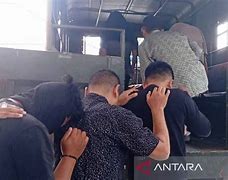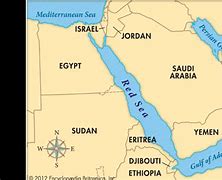
Rất tiếc, trang bạn tìm kiếm không tồn tại
Selain komoditi utama, PTPN IX (Persero) juga menghasilkan produk hilir berupa : Kopi Banaran, Teh Serbuk Kaligua, Teh Celup Kaligua, Teh Serbuk Semugih, Gula 9 dan Sirup Pala 9. Sebagai sarana penjualan, promosi dan distribusi, telah dibangun outlet-outlet berupa kafe yaitu Kampoeng Kopi Banaran Bawen Salatiga, Banaran 9 Coffee and Tea Jambu Kab. Semarang, Banaran 9 Coffee and Tea Majenang Cilacap, Banaran 9 Coffee and Tea Setiabudi Semarang.
Hamengkubuwono IX was born Raden Mas Dorodjatun in Sompilan, Ngasem, Yogyakarta on 12 April 1912 to Gusti Pangeran Haryo (Prince) Puruboyo and Raden Ajeng Kustillah. When Hamengkubuwono IX was three, he was named Crown Prince to the Yogyakarta Sultanate after his father ascended to the throne and became Sultan Hamengkubuwono VIII.
Hamengkubuwono IX had a distinctly Western education. When he was four, he was sent away to live with a Dutch family. After completing his primary and secondary education in 1931, Hamengkubuwono IX left Indonesia to attend the Leiden University in the Netherlands. In Holland, Hamengkubuwono IX took Indonesian studies and economics. He returned to Indonesia in 1939.
With the death of Hamengkubuwono VIII in October 1939, Hamengkubuwono ascended to the throne with a coronation ceremony on March 18, 1940. His full title is “Sampeyan Dalem Ingkang Sinuwun Kanjeng Sultan Hamengkubuwono Senopati Ing Alogo Ngabdurrakhman Sayidin Panotogomo Kholifatullah Ingkang Kaping Songo.” During his coronation speech, Hamengkubuwono recognized his Javanese origins and said “Even though I have tasted Western Education, I am still and will always be a Javanese.”[1]
Sri Sultan Hamengkubuwono IX also became a noted reformer. In his reign, the office of the Sultan adopted a more democratic and decentralized approach. An example of this was the granting of more power to local village chiefs and general modernization of the way in which the court was managed. Hamengkubuwono IX also changed the ways in which the Sultanate held its traditional ceremonies; doing away with ceremonies which he considers to have gone obsolete.
In 1942, the Dutch Colonial Government in Indonesia was defeated by the Japanese Imperial Army. As the Japanese Imperial Army consolidated their hold on Indonesia, many suggested that Hamengkubuwono IX evacuate himself and seek asylum in Australia or the Netherlands. Hamengkubuwono IX refused this offer, insisting that Sultan has to stay close to its people in times of crisis.
Đệm Lò Xo Túi Royal Dream
Giá gốc 4,956,000₫ Giá bán 7,080,000₫
Chất liệu: Lò xo túi độc lập
1 Topper tăng tiện nghi
Mô tả Vận chuyển Bảo hành Bình luận
Minister in the Indonesian Government
After Indonesia’s Independence was recognized by the Dutch Government, Hamengkubuwono IX continued to serve the Republic. In addition to continuing his duties as Governor of Yogyakarta, Hamengkubuwono IX continued to serve in the Indonesian Government as Minister.
Hamengkubuwono IX served as Minister of Defense and Homeland Security Coordinator (1949-1951 and 1953), Vice Premier (1951), Chairman of the State Apparatus Supervision (1959), Chairman of the State Audit Board (1960-1966), and Coordinating Minister for Development while concurrently holding the position of Minister of Tourism (1966).
In addition to these positions, Hamengkubuwono IX have also served as Chairman of the Indonesian National Sports Committee (KONI) and Chairman of the Tourism Patrons Council.
Đệm Lò Xo Túi Royal Dream
Ghé qua cửa hàng để lựa chọn những sản phẩm mới nhất của chúng tôi
Indonesian War of Independence
Directly after the declaration of Indonesian independence on 17 August 1945, Hamengkubuwono IX together with Paku Alam VIII, the Prince of Pakualaman decided to support the newly formed Republic. Hamengkubuwono IX's support was immediately recognized by the Central Government with an appointment to the Life-Governorship of Yogyakarta with Paku Alam VIII as vice governor. Yogyakarta's status was also upgraded to that of the Special Region. In addition, Hamengkubuwono IX served as Yogyakarta's military governor and was also minister of the state from 1945 to 1949.[citation needed]
The Dutch returned to lay claim to their former colony. Hamengkubuwono IX played a vital role in the resistance. In early 1946, the capital of Indonesia was quietly relocated to Yogyakarta, and the Sultan gave the new government some funding. When Indonesia first sought a diplomatic solution with the Dutch Government, Hamengkubuwono IX was part of the Indonesian delegation.[citation needed] On 21 December 1948, the Dutch successfully occupied Yogyakarta and arrested Sukarno and Hatta, Indonesia's first president and vice president. Hamengkubuwono IX did not leave Yogyakarta and continued to serve as governor.[citation needed] The Dutch intended to make Yogyakarta the capital of the new Indonesian federal state of Central Java and to appoint the sultan as head of state, but Hamengkubuwono refused to cooperate.[15] The Dutch viewed him with suspicion and at one stage began to entertain the idea that Hamengkubuwono IX was either planning to make Yogyakarta a completely autonomous region or setting his eyes on the leadership of the Republic.[16]
In early 1949, Hamengkubuwono IX conceived the idea of a major offensive to be launched against Yogyakarta and the Dutch troops occupying it. The purpose of this offensive was to show the world that Indonesia still existed and that it was not ready to surrender. The idea was suggested to General Sudirman, the Commander of the Indonesian Army, and received his approval. In February 1949, Hamengkubuwono IX had a meeting with then Lieutenant Colonel Suharto, the man chosen by Sudirman to be the field commander for the offensive. After this discussion, preparations were made for the offensive. This involved intensified guerilla attacks in villages and towns around Yogyakarta to make the Dutch station more troops outside of Yogyakarta and thin the numbers in the city itself. [citation needed] On 1 March 1949 at 6 am, Suharto and his troops launched the 1 March General Offensive. The offensive caught the Dutch by surprise. For his part, Hamengkubuwono IX allowed his palace to be used as a hideout for the troops. For 6 hours, the Indonesian troops had control of Yogyakarta before finally retreating. The offensive was a great success, inspiring demoralized troops all around Indonesia. On 30 June 1949, the retreating Dutch forces handed over authority over Yogyakarta to Hamengkubuwono IX.[17] On 27 December, immediately after the transfer of sovereignty was signed by Queen Juliana in Dam Palace in Amsterdam, High Commissioner A.H.J. Lovink transferred his powers to Hamengkubuwono during a ceremony in Jakarta in Koningsplein Palace, later renamed Merdeka Palace.[18]
Transition from old order to new order
During the G30S Movement, in the course of which six generals were kidnapped from their homes and killed, Hamengkubuwono IX was present in Jakarta. That morning, with President Sukarno's location still uncertain, Hamengkubuwono was contacted by Suharto, who was now a major general and the commander of Kostrad (Army Strategic Command) for advice. Suharto suggested that because Sukarno's whereabouts are still unknown, Hamengkubuwono IX should form a provisional government to help counter the movement.[20] Hamengkubuwono IX rejected the offer and contacted one of Sukarno's many wives who confirmed Sukarno's whereabouts.
After Suharto had received Supersemar (Order of the Eleventh of March) in March 1966, Hamengkubuwono IX and Adam Malik joined him in a triumvirate to reverse Sukarno's policies. Hamengkubuwono IX was appointed Minister of Economics, Finance, and Industry and charged with rectifying Indonesia's Economic problems. He would hold this position until 1973. [citation needed]
Ever since Mohammad Hatta resigned as vice president in December 1956, the position had remained vacant for the rest of Sukarno's time as president. When Suharto was formally elected to the presidency in 1968 by the People's Consultative Assembly, it continued to remain vacant. Finally, in March 1973, Hamengkubuwono IX was elected as vice president alongside Suharto who had also been re-elected to a second term as president.[citation needed] He retained his post as Yogyakarta Governor during his vice-presidential tenure.
Hamengkubuwono IX's election was not a surprise as he was a popular figure in Indonesia. He was also a civilian and his election to the vice presidency was hoped to complement Suharto's military background. Despite being officially elected in 1973, it can be said that Hamengkubuwono IX had been the de facto vice president beforehand as he regularly assumed the leadership of the country whenever Suharto was out of the country.[21] As vice president, Hamengkubuwono IX was put in charge of welfare and was also given the duty of supervising economic development.[22]
It was expected that the Suharto and Hamengkubuwono IX duet would be retained for another term. However, Hamengkubuwono IX had become disillusioned with Suharto's increasing authoritarianism and the increasing corruption.[23]
These two elements were also recognized by protesters who had demanded that Suharto not stand for another term as president. These protests reached their peak in February 1978, when students of Bandung Technological Institute (ITB) published a book giving reasons as to why Suharto should not be elected president. In response, Suharto sent troops to take over the campus and issued a ban on the book. [citation needed] Hamengkubuwono could not accept Suharto's actions. In March 1978, Hamengkubuwono rejected his nomination as vice president by the People's Consultative Assembly (MPR). Suharto asked Hamengkubuwono to change his mind, but Hamengkubuwono continued to reject the offer and cited health as his reason for not accepting the nomination.[24]
Suharto took Hamengkubuwono IX's rejection personally and in his 1989 autobiography would claim credit for conceiving 1 March General Offense. [citation needed]
Hamengkubuwono IX had been active with Scouts from the days of the Dutch colonial government and continued to look after the movement once Indonesia became independent. In 1968, Hamengkubuwono IX was elected Head of the national Scout movement. Hamengkubuwono IX was also awarded the Bronze Wolf, the only distinction of the World Organization of the Scout Movement, awarded by the World Scout Committee for exceptional services to world Scouting, in 1973.[25][26]
The Indonesian War of Independence
Directly after the declaration of Indonesian independence at 17 August 1945, Hamengkubuwono IX together with Paku Alam VIII, the Prince of Pakualaman decided to support the newly formed Republic. Hamengkubuwono IX’s support was immediately recognized by the Central Government with an appointment to the Life-Governorship of Yogyakarta with Paku Alam VIII as Vice Governor. Yogyakarta’s status was also upgraded to that of Special Region. In addition, Hamengkubuwono IX served as Yogyakarta’s Military Governor and was also Minister of the State from 1945-1949.
It was not long however, before the Dutch returned to lay claim to their former colony. Hamengkubuwono IX played a vital role in the resistance. In early 1946, the capital of Indonesia was quietly relocated to Yogyakarta, in that time the Sultan gave the new government some funds. When Indonesia first sought a diplomatic solution with the Dutch Government, Hamengkubuwono IX was part of the Indonesian delegation.
Things took a turn for the worse on 21 December 1948. That day, the Dutch successfully occupied Yogyakarta and arrested Sukarno and Hatta, Indonesia’s first President and Vice President. The Dutch didn’t dare to overthrow the Sultan however. Hamengkubuwono IX did not leave Yogyakarta and continued to serve as Governor. The Dutch viewed him with suspicion and at one stage began to entertain the idea that Hamengkubuwono IX was either planning to make Yogyakarta a completely autonomous region or setting his eyes on the leadership of the Republic.[2]
Minister in the Indonesian Government
After Indonesia's Independence was recognized by the Dutch, Hamengkubuwono IX continued to serve in government. In addition to continuing his duties as Governor of Yogyakarta, Hamengkubuwono IX continued to serve in the Indonesian Government as Minister.[19]
Hamengkubuwono IX served as Minister of Defense and Homeland Security Coordinator (1949–1951 and 1953), vice premier (1951), chairman of the State Apparatus Supervision (1959), chairman of the State Audit Board (1960–1966), and Coordinating Minister for Development while concurrently holding the position of Minister of Tourism (1966). [citation needed] In addition to these positions, Hamengkubuwono IX held the positions of chairman of the National Sports Committee of Indonesia (KONI) and chairman of the Tourism Patrons Council.
Negotiations with the Dutch
The 28-year-old Sultan negotiated terms and conditions with the 60-year-old governor, Dr Lucien Adam, for four months from November 1939 to February 1940. The main points of contention were:
Eventually, the Sultan agreed to the proposal by the government of the Netherlands, and in February 1942, the Netherlands surrendered Indonesia to the invading Japanese army.
In 1942, the Dutch Colonial Government in Indonesia was defeated by the Japanese Imperial Army. Japan subsequently occupied the Dutch East Indies. Sultan Hamengkubuwono IX was given autonomy to run the government in his area under the Japanese Colonial Government. The position of Pepatih Dalem which previously had to be responsible to the Sultan and the Dutch Colonial Government now became only responsible to the Sultan.[12][13]
Sultan Hamengkubuwono IX was re-elected as Ruler of Yogyakarta on 1 August 1942 by the Commander in Chief of the Japanese Occupation Army in Jakarta and Yogyakarta became a Kochi (Special Region). Amid the large population taking into Rōmusha, the Sultan was able to prevent it by manipulating agricultural and livestock statistics. The Sultan proposed the construction of an irrigation canal that connects the Progo River and Opak River so that rice fields could be irrigated throughout the year, which previously had a rain-fed system. This proposal was accepted and even assisted by funding for its construction. This irrigation channel was later called the Mataram Sewer and in Japanese, it was called Gunsei Yosuiro (Yosuiro Canal). After the construction of the Mataram Sewers was completed, agricultural productivity increased so that the population used as Rōmusha was drastically reduced, although some were still brought in by the Colonial Government.[13][14]
March General Offensive
In early 1949, Hamengkubuwono IX conceived the idea of a major offensive to be launched against Yogyakarta and the Dutch troops occupying it. The purpose of this offensive was to show to the world that Indonesia still existed and that it was not ready to surrender. The idea was suggested to General Sudirman, the Commander of the Indonesian Army and received his approval. In February 1949, Hamengkubuwono IX had a meeting with then Lieutenant Colonel Suharto, the man chosen by Sudirman to be the field commander for the offensive. After this discussion, preparations were made for the offensive. This involved intensified guerilla attacks in villages and towns around Yogyakarta so as to make the Dutch station more troops outside of Yogyakarta and thin the numbers in the city itself.[citation needed] On 1 March 1949 at 6 AM, Suharto and his troops launched the 1 March General Offensive. The Offensive caught the Dutch by surprise. For his part, Hamengkubuwono IX allowed his palace to be used as a hide out for the troops. For 6 hours, the Indonesian troops had control of Yogyakarta before finally retreating. The Offensive was a great success, inspiring demoralized troops all around Indonesia and most importantly, caused the United Nations to pressure the Netherlands to recognize Indonesia's independence.[citation needed]
On 30 June 1949,the retreating Dutch forces handed over authority over Jogyakarta to Hamengkubuwono.[4]
On 27 December, immediately after the transfer of souvreignty was signed by Queen Juliana in Dam Palace in Amsterdam, High Commissioner A.H.J. Lovink transferred his powers to Hamengkubuwono during a ceremony in Koningsplein Palace, later renamed Merdeka Palace.[5]























